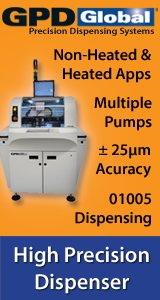Printed Circuit Board Assembly & PCB Design Forum
SMT electronics assembly manufacturing forum.
- SMTnet
- »
- Electronics Forum
- »
- Ionic - MIL-P-28809A vs IPC TM650 (2.3.25C)
Ionic - MIL-P-28809A vs IPC TM650 (2.3.25C)
Views: 6666
![]() Hi all,
I have been in the game for near on 15 years and ...
- Nov 19, 2008
by
Simon UK
Hi all,
I have been in the game for near on 15 years and ...
- Nov 19, 2008
by
Simon UK
![]()
![]()
![]() Simon,
The equivalence factors were used to scale the val...
- Nov 19, 2008
by
Steve Pence
Simon,
The equivalence factors were used to scale the val...
- Nov 19, 2008
by
Steve Pence
![]()
![]()
![]() First, it's GREAT to have a long-term lurker posting here on...
- Nov 19, 2008
by
davef
First, it's GREAT to have a long-term lurker posting here on...
- Nov 19, 2008
by
davef
![]()
![]()
![]() Our sub-contractors will be using SMD600.
Thankyou all fo...
- Nov 20, 2008
by
Simon UK
Our sub-contractors will be using SMD600.
Thankyou all fo...
- Nov 20, 2008
by
Simon UK
![]()
![]()
![]() I'm not sure I completely agree with you regarding the smoke...
- Nov 20, 2008
by
Steve Pence
I'm not sure I completely agree with you regarding the smoke...
- Nov 20, 2008
by
Steve Pence
![]()
![]()
![]() Steve
In response to your comments:
SP: I'm not sure I...
- Nov 20, 2008
by
davef
Steve
In response to your comments:
SP: I'm not sure I...
- Nov 20, 2008
by
davef
![]()
- SMTnet
- »
- Electronics Forum
- »
- Ionic - MIL-P-28809A vs IPC TM650 (2.3.25C)







